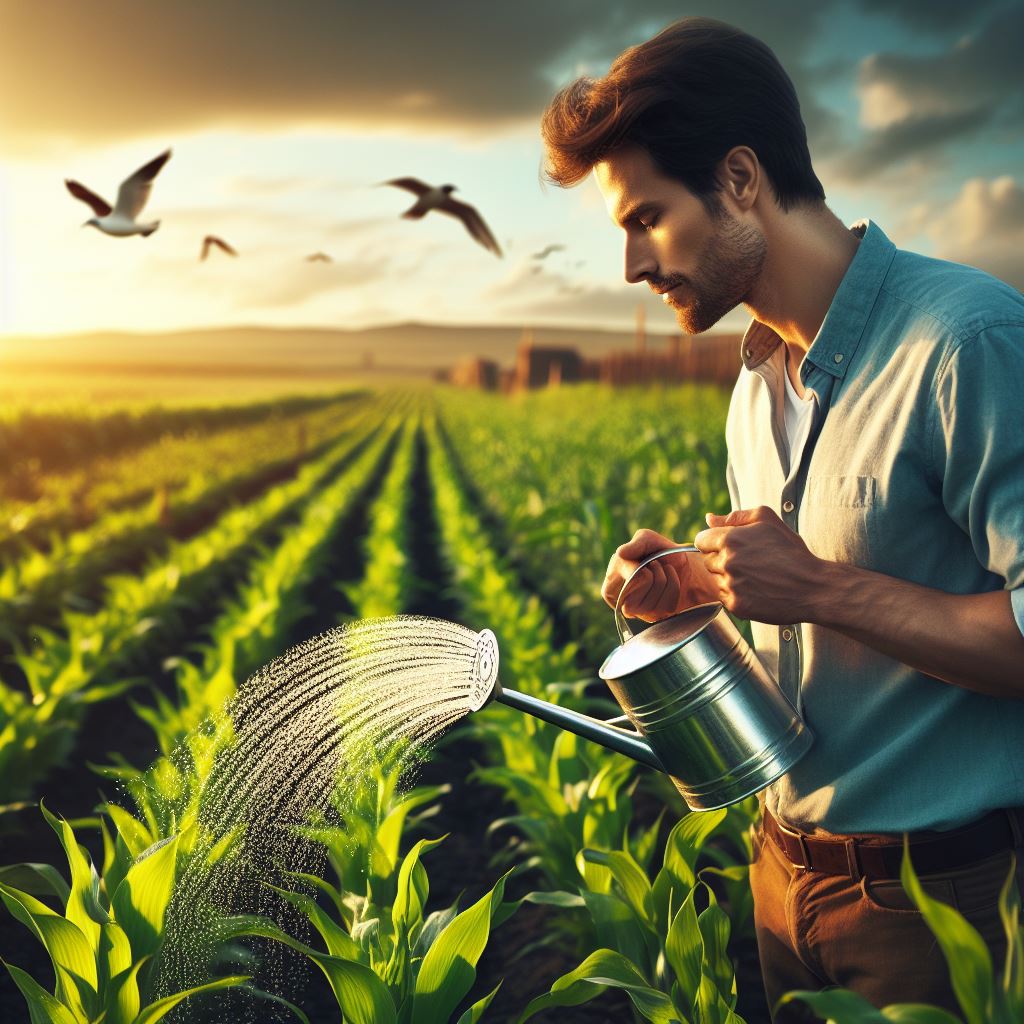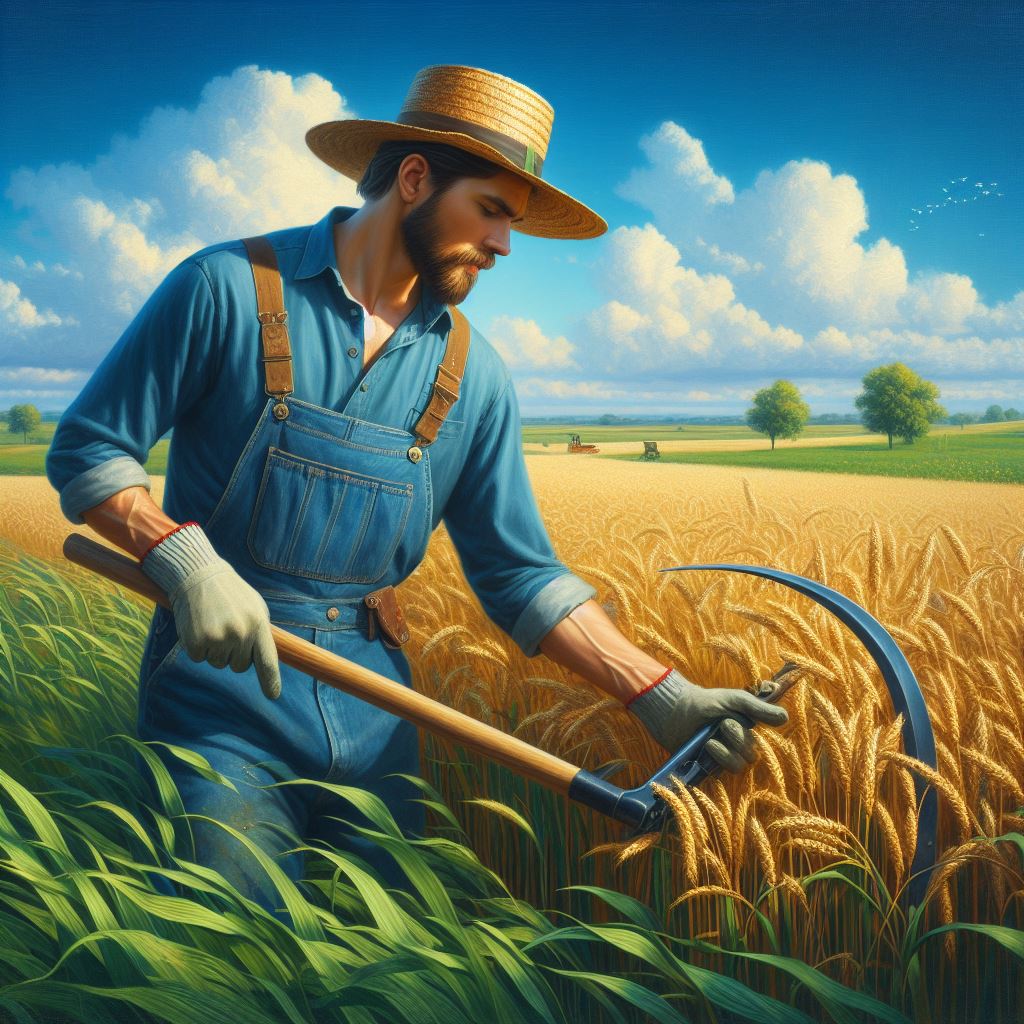Introduction
A. Brief explanation of USDA subsidies
In 2024, the U.S. Department of Agriculture (USDA) has implemented several significant changes to its subsidies program.
These alterations aim to adapt to evolving agricultural needs and promote sustainable farming practices.
One of the key changes is the restructuring of subsidy allocation based on environmental considerations.
The USDA now prioritizes providing financial support to farmers who implement environmentally friendly practices, such as conservation tillage and cover cropping.
This shift encourages sustainable land use and reduces the negative environmental impacts of agriculture.
B. Importance of staying updated on changes in agricultural subsidies
Additionally, the USDA has expanded subsidies for small and mid-sized farms.
Previously, larger operations received a disproportionate share of the funding, putting smaller farms at a disadvantage.
To address this imbalance, the USDA has implemented new measures to ensure fair distribution of subsidies, leveling the playing field for all farmers.
Moreover, the USDA has taken steps to enhance transparency and accountability in subsidy programs.
Farmers can now access detailed information about subsidy applications and disbursements, empowering them to make informed decisions.
This transparency fosters trust between the USDA and farmers, promoting a more equitable subsidy system.
Furthermore, the USDA has increased support for organic farming.
Recognizing the growing demand for organic products, the agency has allocated additional funds to assist farmers in transitioning to organic practices.
This financial support encourages farmers to adopt sustainable organic methods and contributes to the expansion of the organic market.
Therefore, staying updated on changes in USDA subsidies is vital for farmers to optimize their operations.
Transform Your Agribusiness
Unlock your farm's potential with expert advice tailored to your needs. Get actionable steps that drive real results.
Get StartedThe 2024 reforms prioritize sustainable farming practices, support small and mid-sized farms, enhance transparency, and promote organic agriculture.
By embracing these changes, farmers can harness the benefits of the restructured subsidy system and contribute to a more sustainable and equitable agricultural industry.
Background on USDA Subsidies
A. Definition of USDA subsidies
USDA subsidies refer to financial assistance provided to farmers and agricultural businesses by the United States Department of Agriculture (USDA).
These subsidies aim to support the agricultural industry and ensure the availability of affordable food for the nation.
B. Historical overview of agricultural subsidies in the US
Agricultural subsidies in the United States can be traced back to the early 20th century when the government started implementing various policies to stabilize and protect the agricultural sector.
The Great Depression and the Dust Bowl in the 1930s further emphasized the need for government intervention in the form of subsidies.
Over the years, agricultural subsidies evolved and expanded to address different challenges faced by farmers.
They were primarily designed to stabilize commodity prices, support farmers in times of economic downturns or natural disasters, and ensure food security.
The 1970s witnessed a significant shift in subsidy programs, moving away from direct payments and adopting more market-oriented approaches.
This was largely influenced by the increasing criticism of subsidies for causing overproduction and distorting international trade.
C. Key objectives and purposes of USDA subsidies
USDA subsidies serve several key objectives and purposes:
- Income support: One of the primary goals of subsidies is to provide financial stability and support to farmers, especially during periods of low crop prices or adverse weather conditions.
- Market stabilization: Subsidies help regulate commodity markets by managing supply and demand fluctuations, reducing volatility, and maintaining price stability.
- Encouraging production: Subsidies often incentivize farmers to produce certain crops or engage in specific agricultural practices that are deemed important for national food security or environmental conservation.
- Rural development: Subsidies play a crucial role in promoting rural development by stimulating economic growth, creating jobs, and improving infrastructure in agricultural communities.
- Trade negotiations: Subsidy programs are also influenced by international trade agreements and negotiations, aiming to ensure fair competition and prevent unfavorable impacts on global markets.
However, in recent years, there has been increasing debate around the effectiveness and equity of USDA subsidies.
Critics argue that they disproportionately benefit large agribusinesses and encourage unsustainable farming practices.
Looking ahead to 2024, it is expected that USDA subsidies will continue to evolve to address these concerns while aiming to achieve a balance between supporting farmers and ensuring long-term sustainability in the agricultural sector.
Read: New Soil Conservation Acts: A Deep Dive
Overview of USDA Subsidies in 2024
A. Recent changes in USDA subsidy policies
- The USDA has made significant changes to its subsidy policies in recent years.
- One of the major changes is the shift towards a more targeted approach in subsidy allocation.
- Instead of providing blanket subsidies to all farmers, the USDA now focuses on specific sectors and regions.
- This change is aimed at maximizing the impact of subsidies and ensuring they reach those who need them the most.
- Additionally, the USDA has introduced stricter compliance requirements for subsidy recipients.
- Farmers must meet certain environmental and sustainability standards to qualify for subsidies.
- This aligns with the USDA’s goal of promoting sustainable farming practices and reducing environmental impact.
B. Impact of political and economic factors on subsidy programs
- Political and economic factors have a significant influence on USDA subsidy programs.
- Changes in government priorities and budgetary constraints can lead to adjustments in subsidy allocation.
- For example, during times of economic downturn, funding for subsidies may be reduced.
- Conversely, when the agricultural sector faces challenges, subsidies may be increased to support farmers.
- Political pressure and lobbying also play a role in shaping subsidy policies.
- Interest groups and agricultural associations often advocate for specific subsidy programs or changes to existing ones.
C. Focus areas of USDA subsidies for 2024
- In 2024, the USDA will prioritize several key areas for subsidy allocation.
- One of the main focuses will be on supporting sustainable and climate-smart agriculture.
- Subsidies will be offered to farmers who adopt practices that reduce greenhouse gas emissions and improve soil health.
- The USDA will also emphasize the importance of innovation and technology in agriculture.
- Subsidies will be available for farmers who invest in advanced farming techniques, such as precision agriculture and artificial intelligence.
- Additionally, the USDA will continue to provide assistance to small and beginning farmers.
- These farmers often face significant barriers to entry and require financial support to establish and grow their businesses.
Most importantly, USDA subsidies in 2024 are characterized by recent policy changes, the influence of political and economic factors, and a focus on specific areas.
The shift towards targeted subsidies and stricter compliance requirements aims to maximize the impact and promote sustainability.
Political and economic factors can lead to adjustments in subsidy allocation, and interest groups influence subsidy policies.
For 2024, the USDA focuses on supporting sustainable agriculture, promoting innovation, and assisting small and beginning farmers.
These efforts aim to ensure a thriving agricultural sector and contribute to a sustainable and prosperous future.
Read: Water Laws Impact on US Crop Growth

Specific Changes in USDA Subsidies
In 2024, the USDA is implementing specific changes to its subsidies programs to address evolving needs in the agricultural sector.
These changes cover various aspects of crop production, livestock rearing, conservation efforts, and research and development.
A. Crop-specific subsidies
Under crop-specific subsidies, eligibility criteria will be modified to ensure that only deserving farmers receive financial support.
Showcase Your Farming Business
Publish your professional farming services profile on our blog for a one-time fee of $200 and reach a dedicated audience of farmers and agribusiness owners.
Publish Your ProfileThis change aims to foster fairness and prevent misuse of subsidies.
Additionally, payment rates for different crops will be revised to align with market demands and encourage sustainable farming practices.
To further promote sustainability, the USDA is introducing new initiatives that incentivize farmers to adopt environmentally friendly practices such as organic farming, water conservation, and soil health improvement.
These initiatives aim to reduce the environmental impact of agriculture and ensure long-term sustainability of the sector.
B. Livestock subsidies
Moving on to livestock subsidies, the USDA will provide updates on existing programs to adapt to the changing needs of livestock farmers.
This includes reviewing the eligibility criteria, payment rates, and program requirements to better support the diverse livestock sector.
Furthermore, the USDA will introduce new subsidies specifically tailored to certain livestock sectors, considering their unique challenges and contributions to the agricultural industry.
C. Conservation subsidies
Conservation subsidies will see enhanced funding to support efforts aimed at preserving natural resources, protecting biodiversity, and promoting sustainable land management practices.
The USDA recognizes the importance of conservation in maintaining ecosystem balance and resilience in the face of climate change.
Moreover, changes in eligibility and reimbursement rates will be made to ensure that those actively engaged in conservation efforts are adequately rewarded for their contributions.
D. Research and development subsidies
Research and development subsidies will experience increased investment to accelerate agricultural innovation and technology adoption.
As farming practices continue to evolve, research becomes crucial in discovering new methods, technologies, and approaches to address emerging challenges.
By prioritizing investment in agricultural research, the USDA aims to facilitate the development and adoption of cutting-edge technologies that can improve productivity, efficiency, and sustainability in the sector.
In essence, the USDA’s subsidies programs are undergoing specific changes in 2024 to adapt to the evolving needs of the agricultural sector.
These changes encompass crop-specific subsidies, livestock subsidies, conservation subsidies, and research and development subsidies.
Through these changes, the USDA aims to support farmers, promote sustainability, preserve natural resources, and drive innovation in the agricultural industry.
Read: Wildlife Protection and Farm Lands
Explore Further: Agri Supply Chain Tech: Policy Impacts
Implications for Farmers and the Agricultural Industry
A. Potential benefits of the new subsidy programs
- Increased financial support for farmers to invest in modern equipment and infrastructure.
- Enhanced access to research and development initiatives to improve crop yields and sustainability.
- Expanded opportunities for diversification and value-added activities, such as organic farming or agri-tourism.
- Strengthened resilience against unforeseen economic challenges or natural disasters.
- Promotion of technological innovation and adoption to enhance productivity and efficiency.
B. Challenges and considerations for farmers
- Ensuring equitable distribution of subsidies to small and minority farmers to avoid exacerbating income disparities.
- Addressing the potential bureaucratic hurdles and complexities associated with subsidy applications and compliance.
- Balancing the need for financial support with the preservation of environmental sustainability and conservation practices.
- Managing trade-offs in terms of choosing eligible crops or livestock for subsidies while considering market demand.
- Mitigating the risk of overdependence on subsidies, encouraging long-term financial independence and sustainability.
C. Impact on market dynamics and competition
- Potential reduction in farm bankruptcies and consolidation, contributing to a more stable agricultural sector.
- Increased competition among farmers to meet subsidy criteria, driving innovation and productivity improvements.
- Possible changes in commodity prices and market volatility due to shifts in production patterns influenced by subsidies.
- Greater integration of technology and data-driven practices, leading to more precise market forecasting and decision-making.
- Potential reshaping of consumer preferences and demand patterns as subsidies promote certain types of agricultural products.
Overall, the new subsidy programs introduced by the USDA in 2024 hold significant implications for farmers and the agricultural industry.
On one hand, these programs offer potential benefits such as increased financial support, access to research initiatives, and opportunities for diversification.
These initiatives aim to enhance farmers’ resilience, promote innovation, and improve productivity.
However, challenges and considerations must also be acknowledged.
Ensuring fair distribution of subsidies, addressing bureaucratic complexities, and balancing financial support with sustainability are crucial.
Farmers need to carefully navigate eligible crop choices, avoiding overdependence on subsidies, and striving for long-term independence.
The market dynamics and competition are also expected to undergo changes.
Subsidies may contribute to a more stable agricultural sector, decreased bankruptcies, and increased competition among farmers.
Changes in production patterns influenced by subsidies can affect commodity prices and market volatility.
Moreover, subsidies may lead to the integration of technology, more precise market forecasting, and potentially reshape consumer preferences.
These implications reflect the significance of the USDA’s new subsidy programs in shaping the future of farming and the agricultural industry.
While offering potential benefits, it is important for farmers to consider the challenges and market dynamics to make informed decisions and ensure a sustainable and prosperous future.
Read: 2024 Farm Bill: Key Changes for US Farmers
Conclusion
A. Recap of the key points discussed
In 2024, several key changes were made to USDA subsidies. These changes include.
Additionally, new requirements were introduced in order to receive subsidies, such as.
B. Encouragement to stay informed and adapt to changes in USDA subsidies
It is crucial for farmers and agricultural businesses to stay informed about these changes.
By staying updated and adapting their strategies, farmers can ensure they continue to benefit from USDA subsidies.
C. Closing thoughts on the future of agricultural subsidies in the US
The future of agricultural subsidies in the US remains uncertain, as policy priorities and economic conditions can change.
However, it is clear that the USDA will continue to play a crucial role in supporting the agricultural sector.
As we move forward, it is important for policymakers and stakeholders to prioritize sustainable and equitable subsidy programs.
Only with careful consideration, collaboration, and adaptability can agricultural subsidies effectively support farmers and ensure a secure food supply.




